
The Majestic Mt. Apo: Crown Jewel of the Philippines
Explore Mt. Apo, the Philippines' highest peak, where challenging trails, diverse ecosystems, and rich cultural heritage await adventurers and nature lovers.
Mt. Apo, the highest peak in the Philippines, stands at an impressive 2,954 meters above sea level. Located in Mindanao, this towering volcano is a dream destination for hikers, nature lovers, and adventure seekers alike. The trek to the summit is challenging but rewarding, offering breathtaking views and a sense of accomplishment that is hard to match. The mountain is home to a diverse ecosystem, featuring lush forests, hot springs, and unique wildlife, including the critically endangered Philippine eagle. As you ascend, you will pass through different vegetation zones, from dense tropical rainforests at the base to mossy forests and grasslands near the summit. Each zone offers its own unique flora and fauna, making the journey a constantly evolving experience. In addition to its natural beauty, Mt. Apo holds cultural significance for the indigenous peoples of Mindanao. The mountain is considered sacred, and various tribes have long held it in reverence. Visiting Mt. Apo is not just an adventure; it is also an opportunity to learn about and respect the rich cultural heritage of the region.
Local tips in Mt. Apo
- Best time to visit is during the dry season from November to April to avoid slippery trails and heavy rains.
- Permits are required for trekking, so make sure to arrange these in advance with the local authorities.
- Pack light but bring essential items such as a rain jacket, sufficient water, and high-energy snacks.
- Consider hiring a local guide to enhance your trekking experience and ensure your safety.
- Respect the local culture and environment by following Leave No Trace principles.
The Majestic Mt. Apo: Crown Jewel of the Philippines
Mt. Apo, the highest peak in the Philippines, stands at an impressive 2,954 meters above sea level. Located in Mindanao, this towering volcano is a dream destination for hikers, nature lovers, and adventure seekers alike. The trek to the summit is challenging but rewarding, offering breathtaking views and a sense of accomplishment that is hard to match. The mountain is home to a diverse ecosystem, featuring lush forests, hot springs, and unique wildlife, including the critically endangered Philippine eagle. As you ascend, you will pass through different vegetation zones, from dense tropical rainforests at the base to mossy forests and grasslands near the summit. Each zone offers its own unique flora and fauna, making the journey a constantly evolving experience. In addition to its natural beauty, Mt. Apo holds cultural significance for the indigenous peoples of Mindanao. The mountain is considered sacred, and various tribes have long held it in reverence. Visiting Mt. Apo is not just an adventure; it is also an opportunity to learn about and respect the rich cultural heritage of the region.
When is the best time to go to Mt. Apo?
Iconic landmarks you can’t miss
Mount Apo Natural Park
Discover the breathtaking beauty and diverse wildlife of Mount Apo Natural Park, the highest peak in the Philippines, perfect for adventurous tourists.

Mt. Apo's Crater
Discover the breathtaking beauty of Mt. Apo's Crater, the highest peak in the Philippines, a haven for adventure seekers and nature lovers.

Mount Apo 2954m
Experience the breathtaking beauty and adventure of Mount Apo, the Philippines' highest peak, where nature and tranquility converge.

Unmissable attractions to see
People’s Park Davao
Explore the artistic beauty and serene landscapes of People's Park Davao, a unique urban oasis in the heart of Davao City, Philippines.

Davao Riverfront Crocodile Park & Zoo
Discover the wonders of wildlife at Davao Riverfront Crocodile Park & Zoo, a top tourist attraction in Davao City for families and animal lovers.
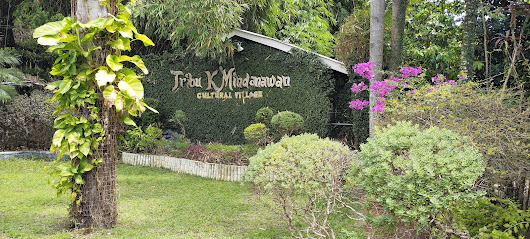
Ramon Magsaysay Park
Experience the natural beauty and cultural vibrancy of Ramon Magsaysay Park in Davao City, a serene escape for tourists and locals alike.

Rizal Park
Experience the tranquility of Rizal Park, an urban oasis in Davao City, where nature and culture harmoniously intertwine for a memorable visit.

Mount Apo Natural Park
Discover the breathtaking landscapes and rich biodiversity of Mount Apo Natural Park, a top destination for nature lovers and adventure seekers in the Philippines.

D' Bone Collector Museum
Explore the extraordinary world of skeletal remains at D' Bone Collector Museum in Davao City, showcasing nature's wonders and promoting conservation.

Jardín de Señorita Mountain Resort
Discover the beauty of nature at Jardín de Señorita Mountain Resort, a serene escape with stunning gardens and breathtaking views in Davao del Sur.

Tamayong Prayer Mountain
Discover spiritual serenity and breathtaking views at Tamayong Prayer Mountain in Davao, a peaceful retreat for reflection and rejuvenation.

Mount Apo
Explore Mount Apo, the highest peak in the Philippines, where breathtaking views and rich biodiversity await every adventurer.
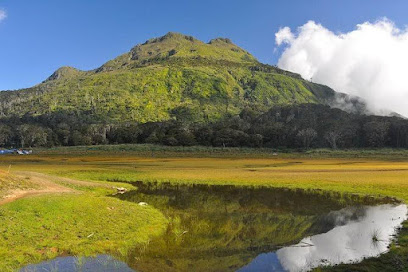
Bamboo Sanctuary and Ecological Park
Explore the serene beauty of the Bamboo Sanctuary and Ecological Park, a lush haven in Davao City dedicated to nature and conservation.
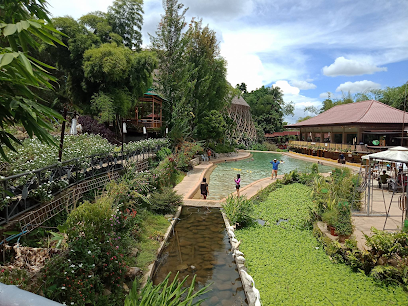
Lake Agco
Experience the tranquility and natural beauty of Lake Agco, a hidden gem in Cotabato perfect for outdoor adventures and relaxation.

Coastal Road Roundabout - Ecoland
Experience the natural beauty and recreational charm of Coastal Road Roundabout - Ecoland in Davao City, a must-visit for outdoor enthusiasts.
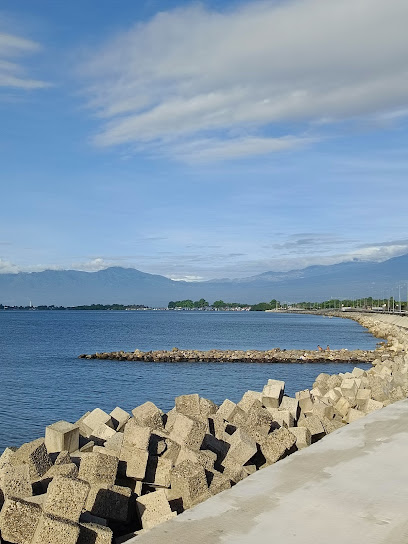
Haven's Dew Resort
Discover the tranquility and natural beauty of Haven's Dew Resort in Bansalan, Davao del Sur, perfect for a relaxing getaway.

Catigan View Deck
Experience the serene beauty of nature at Catigan View Deck in Davao City, a hidden gem for breathtaking views and outdoor adventures.

Tribu K'Mindanawan Cultural Village
Immerse yourself in the vibrant traditions of Mindanao at Tribu K'Mindanawan Cultural Village, a unique cultural experience in Davao City.

Essential places to dine
The Berries Farm Cabin & Restaurant
Experience unique culinary delights surrounded by nature at The Berries Farm Cabin & Restaurant in Davao del Sur.

Apo Andoys Filipino Heritage Cuisine
Discover authentic Filipino flavors at Apo Andoys - where tradition meets taste in Davao City.

Youseff Cafe and Grill / Lejana Vista Staycation
Discover comfort, local cuisine, and stunning views at Youseff Cafe and Grill / Lejana Vista Staycation in Bansalan near Mt. Apo National Park.

Haven's Dew Mountain Cafe
Discover Haven's Dew Mountain Cafe: A Culinary Escape with Breathtaking Views in Davao del Sur.

Alfonso's Ridge
Experience local flavors and breathtaking views at Alfonso's Ridge in Kidapawan City – a culinary destination not to be missed.

Bon Monte Ridge
Experience exquisite dining at Bon Monte Ridge with breathtaking views in Davao del Sur – perfect for food lovers and nature enthusiasts alike.

Markets, malls and hidden boutiques
Mount Apo Natural Park
Discover the breathtaking landscapes and rich biodiversity of Mount Apo Natural Park, the highest peak in the Philippines, perfect for adventure lovers and nature enthusiasts.

Mount Apo
Explore Mount Apo, the highest volcano in the Philippines, a paradise for adventurers and nature lovers with stunning views and rich biodiversity.

Sir Ped's Coffee
Discover Sir Ped's Coffee, where great brews meet breathtaking views in the heart of Davao del Sur's natural beauty.

Sakura's Store
Explore the vibrant local flavors at Sakura's Store, a delightful grocery store in Davao City, where Filipino culture meets fresh produce.

Maila's Souvenir Shop
Explore authentic Davao crafts and souvenirs at Maila's Souvenir Shop, where local artistry meets warm hospitality.

Ezza Store
Discover local flavors and essentials at Ezza Store, the charming grocery destination in Davao City, perfect for tourists seeking authentic culinary experiences.

store
Explore the city with precision using expertly curated maps from the premier map store, perfect for tourists and adventurers alike.

Naomi Store and Piso Wifi
Experience Digos City’s local flavor at Naomi Store and Piso Wifi, your go-to grocery store for authentic snacks and a connection to the community.

mayang store
Explore Mayang Store in Bansalan for an authentic shopping adventure filled with local culture and unique souvenirs.

Kalumad
Discover the essence of Cotabato at Kalumad, a charming souvenir store offering authentic local crafts and unique treasures.

Managsama Store
Explore local flavors and everyday essentials at Managsama Store, a charming grocery store in the heart of Davao City.

ElleZabeth Shop
Explore Davao's vibrant culture at ElleZabeth Shop, your go-to grocery store for local delicacies and fresh produce.

AMY STORE
Explore AMY STORE in Davao City for authentic local products and unique souvenirs reflecting the rich culture of the region.

Esguerra Store
Discover the local flavors and essentials at Esguerra Store, a charming grocery shop in Toril, Davao City, perfect for tourists seeking authentic experiences.

LAO STORE
Explore the vibrant offerings of Lao Store in Kidapawan City, where local treasures and community spirit come together for an unforgettable shopping experience.

Essential bars & hidden hideouts
Jack's Ridge
Experience the best of Filipino cuisine at Jack's Ridge, where delicious food meets breathtaking views in Davao City.

Club Echelon Davao
Discover the heart of Davao's nightlife at Club Echelon, where vibrant vibes, music, and drinks create unforgettable moments.

Upstairs Rooftop Bar Kitchen
Discover the vibrant flavors and stunning views at Upstairs Rooftop Bar Kitchen, a premier dining destination in Davao City, Philippines.
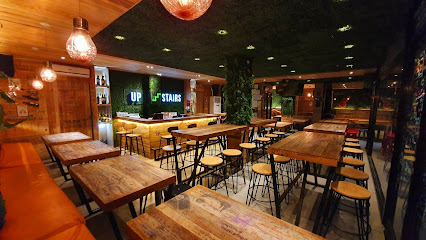
Pitzu-Boo Grill Resto Bar
Discover the vibrant culinary scene at Pitzu-Boo Grill Resto Bar in Davao City, where delicious grilled dishes and local flavors await.

ROOFTOP Café Bar
Experience Davao City from above at Rooftop Café Bar, where great food meets stunning views in a vibrant atmosphere.

Secret Spot Davao
Experience the vibrant nightlife of Davao at Secret Spot, where great drinks and friendly vibes create unforgettable memories.

Ouzo Restobar
Experience Davao's vibrant nightlife at Ouzo Restobar - where exquisite food meets an extensive drink selection.

801 Infinity Restobar
Discover the lively nightlife and delicious cuisine at 801 Infinity Restobar in Davao City, a perfect blend of bar and restaurant ambiance.

Taboan
Discover the vibrant nightlife at Taboan Bar in Davao City, where great drinks and a lively atmosphere await to enhance your evening.

LA BOTTEGA WINE AND SPIRITS
Experience the charm of Digos City at La Bottega Wine and Spirits, where exceptional wines and a cozy atmosphere await your visit.

HEARSAY
Savor the essence of Davao with innovative dishes and a vibrant atmosphere at Hearsay, the city's premier gastropub.

Blue Room Jazz Bar
Immerse yourself in Davao's vibrant nightlife at the Blue Room Jazz Bar, where live jazz meets a cozy atmosphere and delightful drinks.

Alleyway
Discover the lively nightlife at Alleyway in Digos City, where great drinks and a friendly atmosphere await.

Haven's Dew Mountain Cafe
Discover the perfect blend of scenic views and delicious cuisine at Haven's Dew Mountain Cafe in Bansalan, Davao del Sur.

Mikee’s Roof Top
Experience the vibrant nightlife of Davao City at Mikee’s Roof Top, where stunning views and delicious cocktails await.

Local Phrases about Mt. Apo
-
- HelloKumusta
[koo-moo-sta] - GoodbyePaalam
[pa-ah-lam] - YesOo
[oh-oh] - NoHindi
[hin-dee] - Please/You're welcomePaki
[pah-kee] - Thank youSalamat
[sa-la-mat] - Excuse me/SorryPasensya
[pa-sen-sya] - How are you?Kamusta ka?
[ka-moo-sta kah] - Fine. And you?Mabuti. Ikaw?
[mah-boo-tee. ee-kahw] - Do you speak English?Marunong ka ba mag-Ingles?
[mah-roo-nong kah bah mag-ing-les] - I don't understandHindi ko maintindihan
[hin-dee koh main-tin-dee-han]
- HelloKumusta
-
- I'd like to see the menu, pleasePwede ko makita ang menu?
[pweh-deh koh mah-kee-tah ahng meh-noo] - I don't eat meatHindi ako kumakain ng karne
[hin-dee ah-koh koo-mah-kain ng kar-neh] - Cheers!Mabuhay!
[mah-boo-hai] - I would like to pay, pleaseGusto ko magbayad, pakiusap
[gus-toh koh mag-bah-yad, pah-kee-oo-sap]
- I'd like to see the menu, pleasePwede ko makita ang menu?
-
- Help!Tulong!
[too-long] - Go away!Lumayo ka!
[loo-mah-yoh kah] - Call the Police!Tawag sa Pulis!
[tah-wahg sah poo-lees] - Call a doctor!Tawag sa doktor!
[tah-wahg sah dok-tor] - I'm lostNawawala ako
[nah-wah-wah-lah ah-koh] - I'm illSakit ako
[sa-keet ah-koh]
- Help!Tulong!
-
- I'd like to buy...Gusto ko bumili ng...
[gus-toh koh boo-mee-lee ng] - I'm just lookingNagtitignan lang ako
[nag-tee-tee-nyan lahng ah-koh] - How much is it?Magkano ito?
[mag-kah-noh ee-toh] - That's too expensiveMasyadong mahal
[mah-sya-dohng mah-hal] - Can you lower the price?Pwede bang ibaba ang presyo?
[pweh-deh bahng ee-bah-bah ahng preh-syo]
- I'd like to buy...Gusto ko bumili ng...
-
- What time is it?Anong oras na?
[ah-nong oh-ras nah] - It's one o'clockAlas-una na
[ah-las oo-nah nah] - Half past (10)Alas-diyes y medya
[ah-las-dee-yes ee med-ya] - MorningUmaga
[oo-mah-gah] - AfternoonHapon
[hah-pon] - EveningGabi
[gah-bee] - YesterdayKahapon
[ka-ha-pon] - TodayNgayon
[ngai-yon] - TomorrowBukas
[boo-kahs] - 1Isa
[ee-sah] - 2Dalawa
[dah-lah-wah] - 3Tatlo
[tat-loh] - 4Apat
[ah-paht] - 5Lima
[lee-mah] - 6Anim
[ah-neem] - 7Pito
[pee-toh] - 8Walo
[wah-loh] - 9Siyam
[see-yahm] - 10Sampu
[sahm-poo]
- What time is it?Anong oras na?
-
- Where's a/the...?Nasaan ang...?
[nah-sah-ahn ahng] - What's the address?Anong address?
[ah-nong ah-dres] - Can you show me (on the map)?Pwede mo akong ipakita (sa mapa)?
[pweh-deh moh ah-kohng ee-pah-kee-tah sah mah-pah] - When's the next (bus)?Kailan ang susunod (bus)?
[kah-ee-lahn ahng soo-soo-nod] - A ticket (to ....)Isang ticket (papuntang ....)
[ee-sahng ticket pah-poon-tahng]
- Where's a/the...?Nasaan ang...?
History of Mt. Apo
-
Mt. Apo, the highest peak in the Philippines, holds great significance for the indigenous peoples of Mindanao, particularly the Manobo, Bagobo, and other tribes. Known as Apo Sandawa to these tribes, the mountain is considered sacred and is believed to be the home of their god, Apo. These indigenous communities have lived around Mt. Apo for centuries, practicing sustainable agriculture and preserving their rich cultural heritage.
-
During the Spanish colonial period in the Philippines (1521-1898), the Spanish attempted to extend their influence into Mindanao, including the region around Mt. Apo. However, the indigenous communities fiercely resisted Spanish rule, maintaining their autonomy and cultural practices. The Spanish influence in this region remained limited compared to other parts of the Philippines.
-
The first recorded ascent of Mt. Apo was in 1880 by a group led by Don Joaquin Rajal, a Spanish Governor of Davao. The expedition included Datu Manig, a Bagobo chieftain, and other local guides. This historic climb marked the beginning of Mt. Apo's recognition as a significant natural landmark, attracting explorers and naturalists.
-
In 1936, President Manuel L. Quezon declared Mt. Apo a national park, recognizing its ecological and cultural importance. The establishment of Mt. Apo Natural Park aimed to protect its unique biodiversity, including numerous endemic species, and to preserve the cultural heritage of the indigenous communities. Today, the park covers an area of approximately 64,053 hectares.
-
During World War II, Mt. Apo served as a strategic location for both the Japanese and the Filipino guerrilla fighters. The dense forests and rugged terrain provided cover and refuge for the resistance movements. The mountain witnessed several skirmishes and played a crucial role in the local resistance against Japanese occupation.
-
In recent decades, there has been a growing focus on the conservation of Mt. Apo due to threats from deforestation, mining, and tourism. Various government and non-governmental organizations have been working to protect the mountain's biodiversity and promote sustainable tourism. Efforts include reforestation projects, stricter regulations, and community-based conservation programs involving indigenous peoples.
Mt. Apo Essentials
-
Mt. Apo is located in the island of Mindanao in the Philippines. The nearest major city is Davao City, which is served by Francisco Bangoy International Airport (Davao International Airport). From Davao City, you can take a bus or van to Kidapawan City or Digos City, which are common starting points for Mt. Apo treks. The journey from Davao City to these cities typically takes about 2-3 hours by road.
-
Local transportation options include buses, vans, and jeepneys. For those starting their trek from Kidapawan City or Digos City, habal-habal (motorcycle taxis) are commonly used to reach the trailheads. Rental cars are available in Davao City for those who prefer more control over their travel schedule. Ensure you have a local map or GPS, as road signs may not always be clear.
-
The official currency in the Philippines is the Philippine Peso (PHP). Credit cards are accepted in most hotels and some restaurants in larger cities like Davao City, but it is advisable to carry cash when traveling to smaller towns and rural areas. ATMs are available in Davao City and major towns, but it is wise to withdraw sufficient cash before heading to Mt. Apo.
-
Mt. Apo is generally safe for tourists, but as with any travel destination, standard precautions are advisable. Avoid isolated areas at night and keep an eye on your belongings in crowded places. Some areas in Mindanao have been known for occasional unrest; it is advisable to stay informed about the current situation and follow travel advisories. Consult local authorities or guides for the safest routes and updates.
-
In case of emergency, dial 911 for immediate assistance. It is recommended to have travel insurance that covers medical emergencies. The nearest hospitals and medical facilities are located in Davao City. For minor health issues, there are pharmacies in Davao and nearby towns. Always inform your tour guide or a local contact about your itinerary and expected return time.
-
Fashion: Do wear lightweight, breathable clothing suitable for trekking. Wear sturdy hiking boots and carry rain gear. Avoid wearing flashy jewelry. Religion: Do respect local customs and traditions. Dress modestly, especially in rural and tribal areas. Public Transport: Do be respectful and courteous to other passengers. Do not eat or drink on public transport. Greetings: Do greet people with a smile and a slight bow or a handshake. Eating & Drinking: Do try local delicacies and accept food offerings graciously. Do not refuse hospitality, as it is considered impolite. Always wash your hands before eating and use utensils unless advised otherwise.
-
To experience Mt. Apo like a local, consider hiring a local guide who can share insights about the area's history, culture, and biodiversity. Participate in local festivals and events if your visit coincides with them. Visit local markets to buy fresh produce and handmade crafts. Engage with the locals, who are often friendly and willing to share stories. For a unique experience, try to catch the sunrise or sunset from the summit of Mt. Apo.
Nearby Cities to Mt. Apo
-
Things To Do in Cagayan de Oro
-
Things To Do in Camiguin
-
Things To Do in Siargao
-
Things To Do in Bohol
-
Things To Do in Zamboanga City
-
Things To Do in Cebu City
-
Things To Do in Manado
-
Things To Do in Boracay
-
Things To Do in Legazpi
-
Things To Do in Puerto Princesa
-
Things To Do in Palawan
-
Things To Do in Sandakan
-
Things To Do in Tagaytay
-
Things To Do in Manila
-
Things To Do in Koror Town








